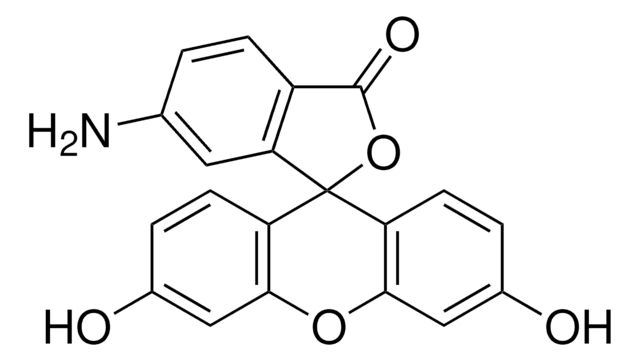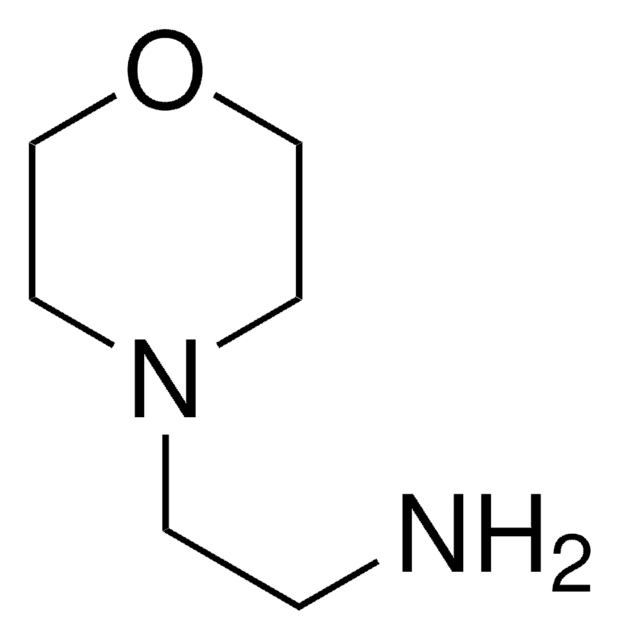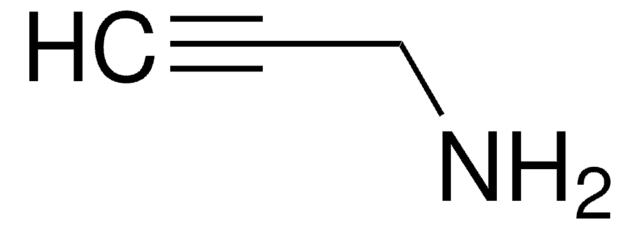Key Documents
201634
6-Aminofluorescein
Synonim(y):
Fluoresceinamine isomer II
About This Item
Polecane produkty
Postać
powder
mp
285 °C (dec.) (lit.)
rozpuszczalność
methanol: 1 mg/mL, clear, yellow to very dark yellow-orange
λmaks.
495 nm
Zastosowanie
diagnostic assay manufacturing
hematology
histology
temp. przechowywania
room temp
ciąg SMILES
Nc1ccc2C(=O)OC3(c4ccc(O)cc4Oc5cc(O)ccc35)c2c1
InChI
1S/C20H13NO5/c21-10-1-4-13-16(7-10)20(26-19(13)24)14-5-2-11(22)8-17(14)25-18-9-12(23)3-6-15(18)20/h1-9,22-23H,21H2
Klucz InChI
YOAWSYSKQHLFPM-UHFFFAOYSA-N
Szukasz podobnych produktów? Odwiedź Przewodnik dotyczący porównywania produktów
Powiązane kategorie
Zastosowanie
Inne uwagi
Kod klasy składowania
11 - Combustible Solids
Klasa zagrożenia wodnego (WGK)
WGK 3
Temperatura zapłonu (°F)
Not applicable
Temperatura zapłonu (°C)
Not applicable
Środki ochrony indywidualnej
dust mask type N95 (US), Eyeshields, Gloves
Wybierz jedną z najnowszych wersji:
Masz już ten produkt?
Dokumenty związane z niedawno zakupionymi produktami zostały zamieszczone w Bibliotece dokumentów.
Nasz zespół naukowców ma doświadczenie we wszystkich obszarach badań, w tym w naukach przyrodniczych, materiałoznawstwie, syntezie chemicznej, chromatografii, analityce i wielu innych dziedzinach.
Skontaktuj się z zespołem ds. pomocy technicznej








